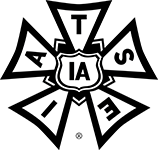
History
IATSE 891 stands as the largest IATSE Local in North America today thanks to the dedicated efforts of our Members and Kin who helped to lay the groundwork for the film industry in British Columbia. In celebration of 891's 60th Anniversary, the IATSE 60th Anniversary Committee initiated work on a documentary outlining the history of our Local, to serve as a legacy piece for all members, past, present, and future. The documentary, which was directed and brought to life by Business Representative Crystal Braunwarth in 2023, features interviews with IATSE 891 leaders and members spanning 60 years, discussing how our Local was built from the ground up.
A full transcription of the documentary short is available here.
For a longform written history of IATSE 891 and the foundation of film work here in British Columbia, we have outlined key points below.
Decades of Growth
In 1962, 18 theatre projectionist and freelance film technicians were granted Charter 891 by IATSE International. It's unlikely that those pioneering individuals had any idea how large and successful their infant Local would eventually become. IATSE 891 now has thousands of members, and British Columbia is recognized as one of the best places in the world to make quality film and television.
Many Milestones
Over the years, the membership has debated and ratified collective agreements and devised ways to attract and serve productions. The Local has also constantly adjusted and amended its constitution and bylaws to facilitate democracy, constructing a framework that allows for ways to develop and nurture our industry.
In 1978, the BC Film Commission (now Creative BC) was established with the mandate of selling BC's considerable physical assets and talented filmmakers to the world, particularly the United States. One of the first film commissioners was Justis Greene, a former Business Representative and member of the IATSE 891 Lighting Department.
During the 1980s, BC production increased roughly 40% each year. To drive the point home that the film industry could be a huge asset for the people of BC, IATSE 891 commissioned a study which concluded that the film industry generated two-and-a-half dollars for every production dollar spent -- a figure far higher than the traditional BC industries of forestry and mining. This 1989 report helped propel the government of the day to increase the funding and mandate of the BC Film Commission.
To keep producers coming back, BC also needed enough available crew and sufficient studio space to service the demand. After lobbying from industry stakeholders, including 891, the government formed a crown corporation to build and run what is now the Bridge Studios -- one of the largest sound stages in North America.
The establishment of the Bridge encouraged businessmen such Stephen J. Cannell, who produced a large number of productions in BC, to open studios.
Exponential Growth
During the 1990s the industry boomed with 500 productions being made. Between 2000 and 2009, IATSE 891 crews worked on 567 film and television shows. Those years truly cemented BC's reputation as a place to make first class productions.
One of the ways the Local helped attract productions was by offering rates and conditions specific to features, series television, and movies of the week -- an approach that still works today.
The Formation of the British Columbia Council of Film Unions
In 1996, by order of the BC Labour Relations Board, the BC Council of Film Unions (BCCFU) was formed. The Council is comprised of IATSE Local 891, IATSE Local 669, and Teamsters Local 155.
Once the Council was formed, a Master Collective Agreement was, and still is, bargained jointly. The Master Collective Agreement rationalized the bargaining process and provided a level of certainty for union members and producers regarding terms, conditions, and rates; it also offered stability for producers and helped the Council unions retain and attract work for their members.
Building Benefits
During the 1990s, the IATSE 891 membership decided to establish a training program which offered skills upgrading, safety training and labour education. The cost of much of the training was, and still is, subsidized by the Local.
During the early 1990s, the membership decided to establish an extensive health benefits plan (HBP)--an enormous help for workers who have no single employer to provide such benefits. As part of this initiative, the HBP also provided an Employee and Family Assistance Program to assist members who were struggling with personal issues of almost any nature.
In 2004, in a move designed to help members plan for retirement, the Local established a group RRSP plan to which employers contribute and members can top-up on a voluntary basis. The Plan is called CEIRP and has 15,000 entertainment workers enrolled across Canada.
A Democratic Foundation
From the start, IATSE 891 has operated democratically. Officers and Officials are elected for specific terms by the membership alongside Executive Committee Chairs, each representing and elected by their respective departments.
The departments were established in the 1980s to ensure that each skill area of the Local had an equal voice regardless of the number of members in the department.
Constant Change an Industry Hallmark
As today's members know, one of the characteristics of this industry is volatility -- work is never guaranteed, the industry is vulnerable to the effects of fluctuating exchange rates, competition from other jurisdictions, changing tax regulations and labour law, and the ever-changing nature of how entertainment is delivered. Despite this, there is no doubt that the hallmark of the past decades has been growth. IATSE Local 891 has been front and centre of building a lucrative employment sector for the province and has helped thousands of British Columbians build successful careers in film and television.








